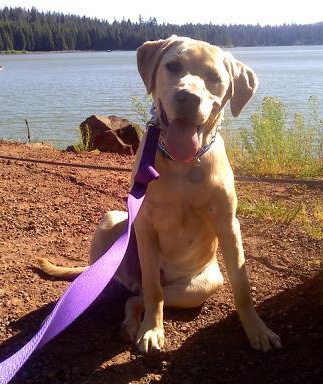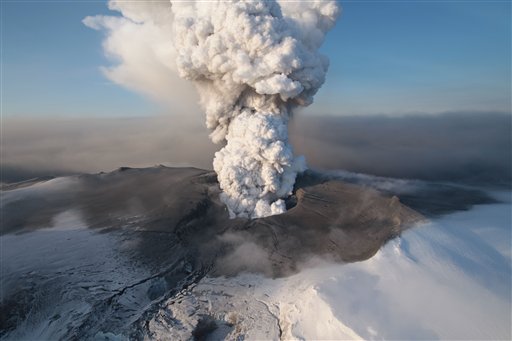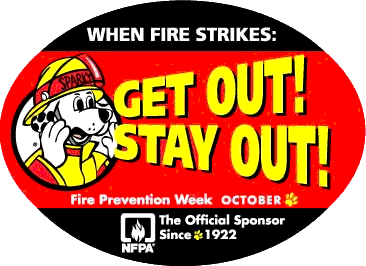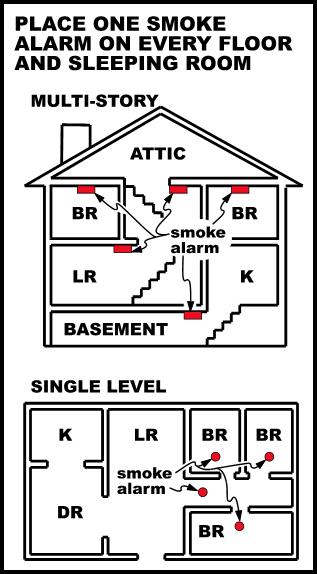Kids' Korner

Welcome to Kids Korner!

Here's your chance to ask RESCUE RICK & "Max" the fire dog.. questions you may have about disasters and emergency preparedness.
We'll try to answer as many questions as we can, but "MAX" and I receive a lot of e-mails, so don't be discouraged if you don't see your question right away. We try to post questions we think readers may be interested in. click here to send your question to us. Be sure to include your first name, your age,your hometown and State.

This page is hosted by Rescue Rick, Disaster Specialist and former Rural Paramedic and Fire Chief. Our Kids 911 facts page is dedicated to kids and parents coping with disasters and emergency situations. You can ask Rescue Rick and “Max” the fire dog questions about how to prepare for disasters, fire safety, and other emergencies. We also offer cool links to Kids preparedness and informational websites that we have reviewed.

Take the Quake Quiz Test!
This is a fun test to take with your parents, or Try it yourself...test your EARTHQUAKE READY Knowledge.
More fun and educational links and games for kids.

CLICK on our friend "SPARKY" for some fun games and fire facts.
 FEMA for Kids
FEMA for Kids
Learn about preparing for disasters, preventing disaster damage, what causes disasters, play games, read stories and become a "Disaster Action Kid" with Herman the spokescrab.
ODPS – Public Safety Kids
Meet Freddie the Firetruck, print off public safety coloring books and make your own license plates.
 Ready Kids
Ready Kids
Create a kit, make a plan and play games with Rory, Rex, Purcilla and Hector. Don’t miss your chance to graduate from Readiness U!
Get READY with Sesame Street Friends Sesame Workshop, along with its project partners has created Lets Get Ready! Planning Together for Emergencies with tips, activities, and other easy tools to help the whole family prepare for emergencies together!
Watch for more great stuff coming soon!

KIDS QUESTIONS?
From Nancy age 9 Salem, Oregon
Who is "MAX"?
Well, "Max" is a member of our family. We lost our 14 year old black Lab a few years ago and adopted "Max" our Golden Lab. He is 10 years old now "What a hand full!"
Marsha age 13, Denver,Colorado
Do you think the ash from the Iceland Valcano will come to the Denver?
 According to Volcanologists (Scientists who study Valcano’s) "It does not look like Eyjafjallajokulla will be a risk for North America" at this point, scientist are saying the ash cloud will probably stop around the Newfoundland area, and then move north into Greenland."
Can you pronounce the name of this valcano? It’s a real tongue twister. Actually, the volcano lies under a glacier named Eyjafjallajokull and from which the valcano gets its name. Try this "AY-yah-fyah-lah-YOH-kuul." Good Luck!…
According to Volcanologists (Scientists who study Valcano’s) "It does not look like Eyjafjallajokulla will be a risk for North America" at this point, scientist are saying the ash cloud will probably stop around the Newfoundland area, and then move north into Greenland."
Can you pronounce the name of this valcano? It’s a real tongue twister. Actually, the volcano lies under a glacier named Eyjafjallajokull and from which the valcano gets its name. Try this "AY-yah-fyah-lah-YOH-kuul." Good Luck!…
Justin age 9, Medford, Oregon
We are talking about Fire Prevention month in our school. Do you have any information I could share?
Yes Justin, Having a plan in case of fire at home and your school is very important . Here are a few tips.
Fire Safety in the home is the responsibility of every member of your family. There are a few things that you should do, along with the rest of the family. This is so everyone knows what they have to do in the event fire strikes your home. Remember, your home and property can be replaced. You or a family member can not.
The first thing you and your family needs to do when getting started with fire prevention planning is to make a Home Escape Plan. Developing and practicing a home fire escape plan that everyone understands can mean the difference between life and death. Fire can grow and spread through your home very quickly. It's important that you be prepared to react as soon as the smoke alarm sounds.Make sure your family establishes and knows where the
Developing and practicing a home fire escape plan that everyone understands can mean the difference between life and death. Fire can grow and spread through your home very quickly. It's important that you be prepared to react as soon as the smoke alarm sounds.Make sure your family establishes and knows where the
Family Meeting Place is out in the yard. This is so everyone can be accounted for.
Rescue Rick and "MAX" always say NEVER GO BACK IN...
"When Fire Strikes: Get Out, Stay Out".
Do not go back in the house for any reason. Firefighters wear special breathing and protective gear,and are specially trained to enter a smoke filled building. Max and I don't want you to become a victim.
The first person that makes it to the meeting place needs to go to the neighbors house and call 911. Give the 911 dispatcher your name, your house number, your street name, and city where your house is. Hang up the phone and return to the family meeting place to await fire department's arrival. Once the fire department arrives advise them if anyone is still in the house and their location. Rescuing people is the fire department's first priority.
Smoke detectors need to be installed in your home on every floor level. They need to be located outside of every bedroom door or outside groups of 3 bedroom doors. Install detectors down the hallway away from bathroom doors and in another room just adjacent to kitchen areas.
Test smoke detectors weekly to ensure proper operations. Each detector needs to be vacuumed out of dust with a vacuum cleaner or blow out with a bottle of compressed air twice a year. Replace batteries with new ones, twice a year whether they need it or not. The best time to do this is when the time changes in the spring and fall.
Do fire drills with the family once a month and go over the location of the meeting place.
Install dry chemical ABC fire extinguishers at each exit of your kitchen area. Do not locate fire extinguishers next to the stove. If you have a stove fire you may not be able to reach them.
Have fire extinguishers checked yearly to ensure proper operations. Check gauges often to see if they are charged and pins are still secured. Make sure you know the proper operations of the extinguishers.
Using a portable fire extinguisher - Remember the word PASS:
Pull the pin.This unlocks the operating lever.
Aim low. Point the fire extinguisher nozzle or horn at the base of the fire
Squeeze the lever or button above the handle.
Sweep from side to side until the flames appear to be out*. Even if you think you have extinguished the fire, there could be a flare up again.
*Important: Rescue Rick and "Max" recommend that portable fire extinguishers be used by adults only. Children should be taught to prevent and escape a fire, not to fight one.
If your clothes catch on fire follow the stop drop and roll rule.
"Stop, Drop, Roll and Cool"
The Stop, Drop, Roll and Cool procedure should be used to extinguish flames and lessen burn injuries if your clothing catches fire:
STOP immediately where you are. STOP and DROP to the ground. ROLL over and over, covering your face and mouth with your hands (this will prevent flames from burning your face and smoke from entering your lungs. Roll over and over until the flames are extinguished.
COOL the burn with cool water for 10-15 minutes. Get help from a grown-up and emergency responders if needed.
Mark age 10, Reno, Nevada
I go to school in Reno and we had a earthquake drill that was very cool. We learned about Duck Cover and Hold and stuff we should do at home in case of a big earthquake. It was a lot of fun. Do you have those kind of drills where you are from?
We sure do Mark, In fact Fire Dog “Max and I live in earthquake country too. On Oct. 21 at 10:21AM nearly 8 million people participated in the “SHAKE-OUT”. This EARTHQUAKE DRILL has been conducted since 2008 and is designed to help reduce the risk of injury in earthquakes by encouraging people to practice the “Drop, Cover and Hold On” safety procedure that organizations like the American Red Cross and other emergency agencies recommend the public take when an earthquake occurs.Here you go Mark...Learn more about earthquake preparedness with this fun game
BEAT THE QUAKE
ALSO try your luck at our “QUAKE QUIZ” test below. It’s lots of fun and very informative.
TOP



